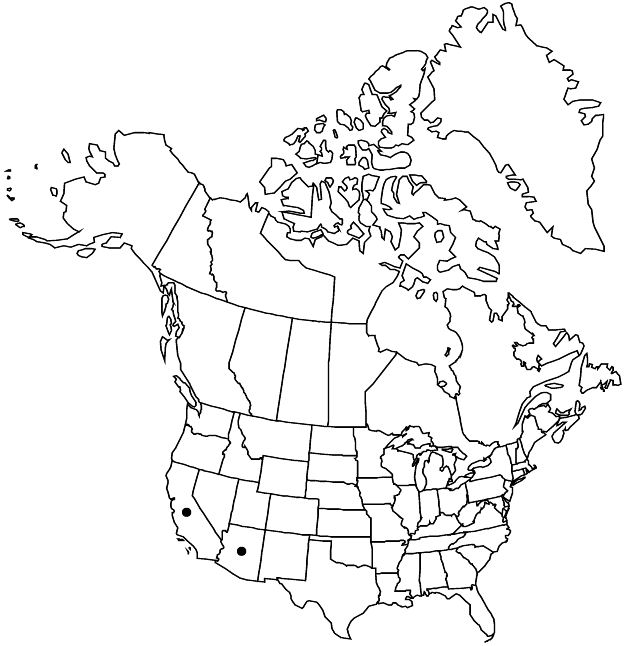Euphorbia melanadenia
Pacif. Railr. Rep. 4(5): 135. 1857.
Herbs, perennial, with moderately to strongly thickened rootstock. Stems ascending to erect, 5–20 cm, sericeous to appressed-villous. Leaves opposite; stipules distinct (lower side) and connate (upper side), linear, 0.5–1 mm, densely pilose; petiole 0.8–1.5 mm, tomentose; blade ovate, 1.2–5 × 0.8–2.9 mm, base asymmetric, hemicordate, margins entire, apex rounded to acute, surfaces tomentose; venation inconspicuous. Cyathia solitary at distal nodes; peduncle (0.6–) 1.4–1.9 mm. Involucre campanulate, 0.6–1.1 × 0.7–1 mm, tomentose; glands 4, deep red to purple, elliptic, 0.3–0.4 × 0.4–0.7 mm; appendages white or becoming pink with age, oblong to flabellate, 0.4–0.7 (–1) × 0.7–1.2 mm, distal margin entire or erose. Staminate flowers 45–80. Pistillate flowers: ovary tomentose, styles 0.5–0.8 mm, 2-fid nearly entire length. Capsules ovoid, 1.4–1.8 × 1.4–1.7 mm, tomentose; columella 1.2–1.5 mm. Seeds gray to tan, oblong, 4-angled in cross-section, 1–1.2 × 0.4–0.6 mm, smooth to wrinkled or alveolate.
Phenology: Flowering and fruiting year-round.
Habitat: Rocky slopes, river washes, dry to wet soils.
Elevation: 400–1400 m.
Distribution

Ariz., Calif., Mexico (Baja California), Mexico (Sonora)
Discussion
Euphorbia melanadenia is similar in appearance to E. cinerascens, but E. melanadenia has conspicuous involucral gland appendages whereas E. cinerascens has inconspicuous appendages or lacks them entirely. Euphorbia melanadenia occurs in Arizona and southern California, whereas E. cinerascens is found only in southern and western Texas.
Selected References
None.
Lower Taxa
"connate" is not a number. "distinct" is not a number."entire" is not a number.